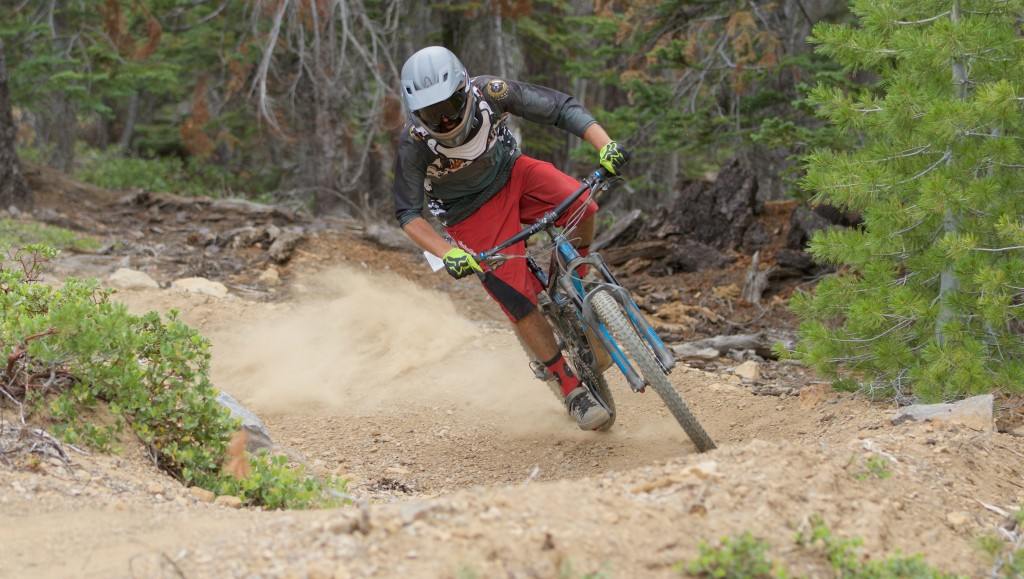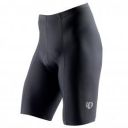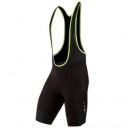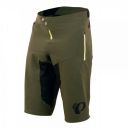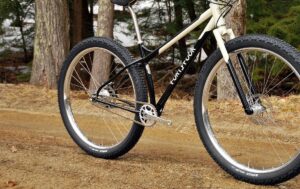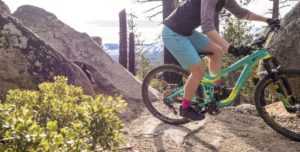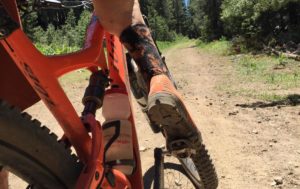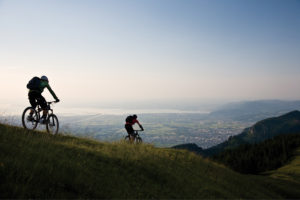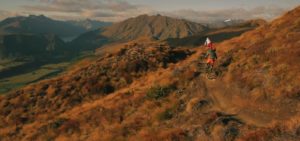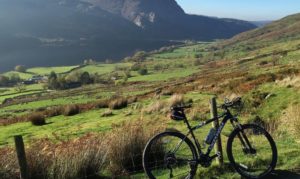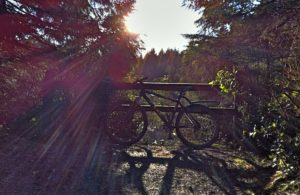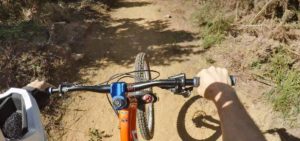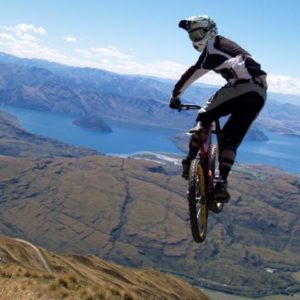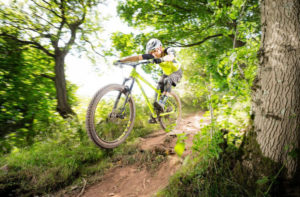What is the best baggy short for mountain biking? We tested a selection of the best and most popular mountain bike shorts on the market and found which ones are the all-around best shorts for different types of trail riding, ranging from cross-country marathons to lift-assisted downhill gnar fests. We rated each short on style, durability, features, fit, comfort, protection, and pedal efficiency. Based on these tests we found some excellent shorts, a couple of great deals, and some shorts we think you should steer clear of.
Best MTB Shorts – Quick Answer
-
Zoic Ether MTB Shorts
-
100% Airmatic All Mountain
-
Dakine Boundary
-
Troy Lee Ruckus Shell
-
Patagonia Dirt Roamer
Best Overall MTB Shorts: Pearl Izumi Elevate
Our best pick goes to the Pearl Izumi Elevate, which scored high in every test. This short quickly became our favorite with its cool looks, long protective inseam length, leg openings that accommodate knee pads, and well-fitting 4-way stretch fabric. The Elevate does not include a liner short, which is its biggest downside. However, this is okay with us since included liners are often not of the highest quality. We would rather buy a quality liner and have a comfortable outer short with plenty of zippered pockets, like the Elevate.
This product is well suited for nearly the full range of mountain biking, from mellow all-mountain to downhill riding, but it would be most at home on an enduro bike. At $100, it falls near the middle of the price range for baggy mountain bike shorts, and we think it’s worth the price.
Best Value: Zoic Ether
- Affordable
- Lots of Pockets
- Chamois Liner Included
- Not as well ventilated as other shorts tested
If you are just getting into mountain biking, or just can’t wrap your head around spending $150+ on a pair of shorts, then the Zoic Ether has the answer. You will not find a better pair of shorts with a liner for $80. If you are thinking that Zoic must have skimped on features to bring this contender to the market at this price point, you would be incorrect. Six pockets and a well-designed waist adjustment system are just some of the features that make this short a winner.
The included chamois is not the highest quality, but at this price, we won’t complain. The Ether outscores many shorts with much higher price tags in our comparative testing. Spending less often means compromising on functionality, but the Ether is an exception, it is a solid short and a smart buy.
The RPL Essential Liner, which is included with the Ether, is fully removable and is middle of the trail in terms of quality and comfort. For the price, you can’t get a better baggy mountain bike short, especially with an included liner.
Best Overall Enduro Race Short: 100% Airmatic All Mountain
- Comfortable
- Stylish
- Good Coverage
- Excellent Chamois liner
- Expensive
- Polarizing color options
The 100% Airmatic shorts are an enduro/trail specific short that receives our highest accolades for comfort and fit. With solid scores across the entire range of our comparative tests, it is one of those rare products that does everything really well. If we had to pick a short for shuttle runs in the morning followed by a 30-mile vision quest suffer fest in the mountains then the Airmatic would be it. The fit is perfect, threading the thin line between baggy and articulated with just enough room to accommodate knee pads without any unnecessary fabric flapping in the wind. They feel fast on the bike, and casual when you step off. 4-way stretch fabric, two zippered pockets, and an excellent waist adjustment system that can be accessed on the fly round out these amazing shorts. The only thing that we had reservations about is the rather loud color options but even our more conservative testers quickly became enamored with the Airmatic in spite of the orange color and moto styling.
Best for Pedaling: Dakine Boundary
The Dakine Boundary is the most pedal-friendly short in our review. The recently updated Boundary is made from a very lightweight 4-way stretch material which allows for a full range of motion with no restriction whether you are pedaling in or out of the saddle. This short has a sleek design and can easily double as a high-end board short or hiking short. Two components of the sleek look are the welded seams and the hook and loop waistband adjustment which is covertly hidden inside the waistband.
The Boundary has what we consider the perfect ergonomic cut that combines a short rise with a long inseam along with plenty of room in the seat. A rear stretch panel is not needed in the seating area to provide extra room because the entire short is made from such a stretchy material. This material is also the fastest drying material we’ve found in a baggy mountain bike short, which is great should your all-day bike adventure include a dip in the lake to cool off. The Boundary’s only pocket is a hidden zippered pocket on the right thigh, which does not work well for heavier items like a bike tool or cell phone.
Choosing the best mountain bike short for your needs
Bike shorts are more than just a stylish accessory. Though the right pair can help you look the part, with a padded chamois to protect the rider from many hours of sitting in the saddle, bike shorts aim to make riding more comfortable and more enjoyable, no matter your preferred style of cycling. While some shorts aim to be aerodynamic, others aim to be protective and have functional pockets for a day of dirt riding.
Once you have selected the appropriate shorts for a day of riding trails, make sure you check out our Mountain Bike Helmet Review for extended-coverage half-shell models and our Full-Face Downhill Helmet Review if you prefer lift-accessed mountain biking.
Types of Bike Shorts
There are two primary types of bike shorts: tight bike shorts, used for road cycling and often cross-country trail riding, and baggy shorts for mountain biking. Shorts designed for road cycling can come as either regular shorts or bibs, which many riders find to be the most comfortable. Most bike shorts have a padded chamois that provides some protection between the rider and the saddle, but they are usually positioned differently for different styles of riding.
Road biking requires the rider to sit in a more forward, aggressive stance and stay in the same position for a long period of time, requiring a more anteriorly positioned chamois. Mountain biking involves a more upright position and more dynamic movement, so in shorts for this style of riding the chamois is positioned more posteriorly.
Road biking also has more focus on wind resistance and drag, making tight lycra or spandex shorts popular. In mountain biking, baggy shorts with a removable liner containing the chamois, are more stylish and offer more protection against the ground during a crash.
The majority, but not all, baggy mountain bike shorts, are sold with a padded liner short. Liner shorts can also be purchased separately. In the first iteration of this review, all of the products we reviewed came with a liner short. This time around several pairs, some even the same model as in our last test, did not come with a chamois liner, and others greatly reduced the quality of the liner that was included. We suspect that the industry is leaning more towards selling quality liners and quality outer shorts separately.
This is a shame since it costs more overall to purchase 2 products, however, it does allow for some versatility. You can buy one-liner short and 2 or 3 outer shorts for different types of riding. Maybe you want a longer pair that fits well with kneepads for bike park riding and a shorter, lighter weight pair for longer days of pedaling.
In this review, since some pairs came with chamois liners and some didn’t, and none came with a really awesome chamois, we spend most of our evaluation on the outer shorts.
How We Chose

Style
Style is the most subjective area in which we compared our shorts, however, it is an area almost every rider will consider before buying a short. Everybody wants to look cool, but that means something different to everybody. Our sampling of baggy mountain bike shorts includes a range of looks from gym short-esque to pro enduro racer. Our sense of style may be different than yours, but you should be able to find something that appeals to you across the range of shorts we reviewed.
Our style-o-meter said that the Pearl Izumi Elevate is the most stylish short in our test with its sport-specific design but not over the top “hey look at me” flashiness. Other stylish shorts we found were the sleek board short-like Dakine Boundary, the pro-looking Troy Lee Ruckus, and the casual but covert Fox Ranger. Two shorts we would rather not be seen in are the Endura Hummvee with its handyman look and the Canari Canyon Gel which looks like a high school gym shorts with pockets.
Durability
Mountain bike shorts need to hold up to the repetitive motion of pedaling as well as frequent washing, just like road shorts, but they should also hold up to crashes better than lycra.
This is mostly a test of the fabrics from which the short is made, but also of overall quality of construction. We looked closely at areas of potential weakness like exposed mesh or poorly placed seams. We also looked for bells and whistles that were likely to fail. We gave higher ratings to shorts constructed from abrasion resistant fabrics, shorts with well-placed seams, and shorts with double and even triple stitching.
The most durable short we found was the Endura Hummvee which is made from multiple layers of ripstop fabric with many of the seams triple stitched. Though the Hummvee is very durable it is not the most efficient for pedaling and might be better suited to trail building rather than actually riding those trails.
Features
The shorts in this review have a wide range of features, some of which we found to really benefit the rider while others just got in the way or weighed the short down. Here is a run-down of the most useful and noticeable features:
Pockets
First, we looked at the number and placement of pockets. While pockets seem like the simplest of features, we think that they are the most important feature a short can have, and make a huge difference in the functionality as a mountain bike short. We did about half of our test rides with a hydration pack and the other half without. Since most mountain bike jerseys lack the pockets found on road jerseys, we found pockets to be vital to carrying necessities on rides without a pack.
We favored pockets which fully closed with zippers over those with velcro patches or no closure at all. While open pockets might be okay for a gel or a bar, we don’t trust them for more valuable items like a phone or multi-tool.
The very best configuration of securable pockets was found on the Pearl Izumi Elevate with two zippered hand pockets and one zippered rear waistband pocket. The Troy Lee Ruckus and Zoic Ether also have a healthy number of zippered pockets for carrying the necessities. Both the Dakine Boundary and Pearl Izumi Canyon have just one pocket which means you will have to combine these shorts with some sort of pack for carrying your accouterments.
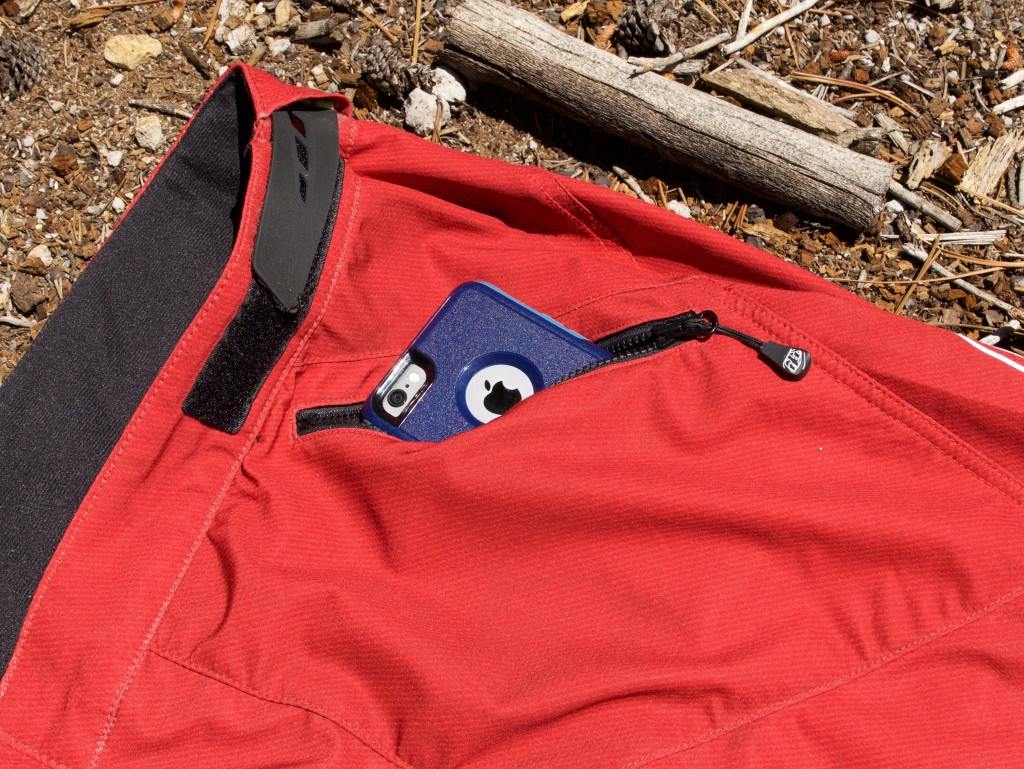
Waistband Adjustments
All of the shorts we tested had some sort of built-in waist adjustment mechanism. We think this is an important feature in a mountain bike specific short since it allows the outer short to be worn over a variety of layers like liner shorts or heavier shorts with armored panels. Waist adjusters also allow the short to stay in place without a full belt which can sometimes be uncomfortable when hunched over on the bike. The most common method of waist adjustment we found is with hook and loop attached to elastic bits either inside the waistband against the skin our outside the waistband. We’ve come to prefer the interior method over the exterior method because placing the band inside keeps it from snagging on a jersey while giving the short a cleaner look.
Each of the other shorts we tested had unique waist adjustment methods. The Canari Canyon Gell uses a simple elastic waist with a drawstring. The Endura Hummvee uses a similar elastic waistband but also has a built-in and included nylon belt. The most interesting waist adjustment method we found are the dual Boa dials found on either side of the Sugoi RSX. While this method provided one-handed on the fly adjustment it also proved to be unreliable and often released and loosened while riding.
Other Bells and Whistles
There were a variety of other features besides pockets and waist adjusters some of which we found usable and others we found of little or no value. Some of the usable bells and whistles were the headphone guides found on the Zoic Ether and pre-sewn trimmable legs found on the Troy Lee Ruckus. Features that we didn’t find much use for were the key clip and leg opening adjusters on the Endura Hummvee and the mesh vents found on the Zoic Ether.
When considering the score in this category we recommend that you consider if a feature is something you are likely to use or not. If a short has a feature that you aren’t likely to use, then it is just going to weigh the short down, add bulk, or add to the price of the short. Overall we recommend seeking a short with the right amount of features for you as a rider rather than the short with the most features.
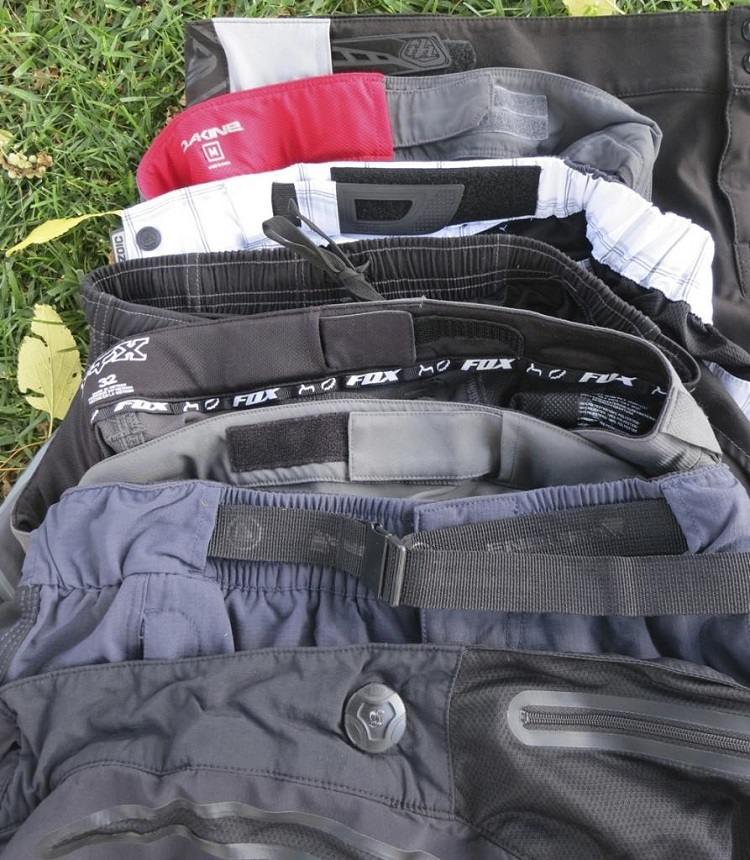
Comfort
In this category, we evaluated the feel and function of the liner short. The majority of the mountain bike shorts we’ve tested are sold with a liner short which has some sort of chamois for undercarriage protection. The Pearl Izumi Elevate, along with the most recent version of the Dakine Boundary are sold without a liner short which caused these shorts to score lower in our comfort test. We looked for chamois that provided the right amount of padding, but that was also positioned properly within the liner. When pedaling a mountain bike, the rider is more upright than on a road bike, and we looked for chamois that were placed slightly more posteriorly to accommodate for this position.
The Canari Canyon Gel has a thick gel chamois while all of the other liners use foam chamois. The Canyon Gel also stood alone as the only short with a completely fixed and non-removable liner short. The Pearl Izumi Canyon has a partially attached liner short which can float against the outer short for better positioning of the chamois, and could be removed completely with a small amount of scissoring.
All of the other shorts we tested had fully separating liners which allow the outer short to be worn without a liner, or the liner to convert another short to a bike short. We prefer shorts which fully separate because they give us versatility and essentially add value to the short.
The legs of the Troy Lee liner short are finished with a wide band of doubled lycra rather than silicone or elastic leg grippers and are similar to high-end road shorts. We aren’t fond of the silicone or elastic grippers because they tend to pull on the skin and sometimes feel restrictive. Pros and riders who spend tons of time on the bike often cut out silicone or elastic grippers to make their shorts more comfortable. While clothing companies often advertise silicone grippers as a selling point, there are better ways to keep form-fitting shorts in place, like those found on the Ruckus.

Protection
Mountain biking is often a contact sport. Contact with dirt, rocks, and sometimes trees is what we are talking about. Wearing a short with more protection boosted our confidence on the bike and helped us pedal faster through the rough.
We considered a few things when evaluating the protection factor of each short. First, we looked at the length of each short’s inseam. Longer shorts offer more protection. The longest inseam was found on the Peal Izumi Elevate with a 15″ inseam. The Troy Lee Ruckus is also a highly protective short with a 14″ inseam. The shortest inseams were found on the Sugoi RSX and the casually fitting Fox Ranger, both with 10″ inseams. We also considered the outer fabric of each short. Shorts made from burlier material are more likely to stay in place in a crash and less likely to tear. Both the Dakine Boundary and Endura Hummvee have high protection scores for their burly materials. While neither short stretches, the Boundary has a well-articulated shape which still allows for easy pedaling. In contrast, the Hummvee is very restrictive due to its lack of ergonomic shape, though it is the short we would want to be wearing if we went for a huge slider.
We did about half of our testing wearing kneepads to see how well they fit with each short. If you often wear kneepads while riding, consider the Zoic Ether or Troy Lee Ruckus, or Pearl Izumi Elevate all of which have a long enough length and wide enough openings to just cover the top of the pads while seated. If you only ride cross-country or you’re a cautious rider who almost never comes off the bike, consider the Pearl Izumi Canyon which trades protection for efficiency.
A few of the shorts advertise water resistant treatments. On one rainy test ride in the Sugoi RSX, we noticed bead up on the top of the legs while riding, but we didn’t put too much value in this. Actually, these are the shorts and we feel are most likely to allow you to get wet, either from sweat or water coming up the legs if riding in heavy rain. If you need to stay dry and warm on the bike, we recommend a full-on waterproof bike pant.
Fit/Pedal Friendliness
This is a measure of how well each short allowed us to pedal a mountain bike, both in and out of the saddle. We looked for shorts which combined well-articulated fits with stretch fabrics to make for unrestricted movement on the bike. We also took into consideration the comfort of the liner short and the placement of the chamois.
Our favorite mountain biking shorts have an articulated fit geared towards seated pedaling. What we looked for were shorts that have extra room in the seat, either by a stretch panel or added volume, combined with a short front rise. A shorter front rise makes for less volume in the front and prevents the short from bagging up when seated. We found that shorts with both added seat room and decreased front rise had legs which cant forward when off the bike, but feel comfortable when seated on a saddle.
The two best shorts we found in this category are the Pearl Izumi Canyon and the Dakine Boundary. The Canyon combines lightweight stretch fabric with a slim but articulated fit and makes a good choice for cross-country riding or an alternative to form-fitting lycra.
The Boundary also combines a great fit with 4-way stretch fabric, but provides for more coverage and makes for a better choice across the full range of mountain biking. If pedal efficiency is important to you, stay away from restrictive non-stretch shorts like the Endura Hummvee.

